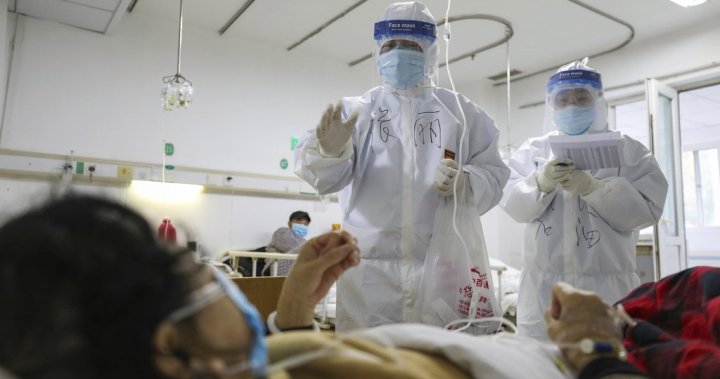The World Health Organization says its probe into the origins of the SARS-CoV-2 virus, which caused the COVID-19 pandemic, is still ongoing, and despite a three-year investigation, has yet to find the exact cause.
“As things stand, all hypotheses must remain on the table, including zoonotic spillover and lab leak,” WHO director-general Tedros Adhanom Ghebreyesus said during a press briefing Friday.
His comments came after a report published Friday from the Scientific Advisory Group for the Origins of Novel Pathogens (SAGO), which said “available evidence” supports the hypothesis that the coronavirus jumped from animals to humans, likely from bats “or through an intermediate host,” through a process called zoonotic spillover.
SAGO is a panel of 27 independent, international, multidisciplinary experts formed by the World Health Organization to advise on technical and scientific considerations regarding emerging and re-emerging pathogens, like COVID-19.
“While most available and accessible published scientific evidence supports hypothesis #1, zoonotic transmission from animals, possibly from bats or an intermediate host to humans, SAGO is not currently able to conclude exactly when, where and how SARS-CoV-2 first entered the human population,” the report reads.
It notes the closest known “precursor strains” were identified in bats in China and the Lao People’s Democratic Republic, but says the strains are too distantly related to the virus to be the direct source of the pandemic.
The report notes that some of the difficulty in determining a cause is due to China not having shared certain information, which also has made it difficult to examine the second hypothesis suggesting an accidental lab leak.
The WHO requested the country share hundreds of genetic sequences from individuals with COVID-19 early in the pandemic, as well as more detailed information about the animals sold at markets in Wuhan, and information on work done and biosafety conditions at laboratories in Wuhan.

Get weekly health news
Receive the latest medical news and health information delivered to you every Sunday.
“To date, China has not shared this information either with SAGO or WHO,” a news release says.
Marietjie Venter, the chair of the group, said on Friday during a press briefing that without the necessary data, it could not evaluate if the virus was the result of a lab accident.
“Therefore, this hypothesis could not be investigated or excluded,” Venter said. “It was deemed to be very speculative, based on political opinions and not backed up by science.”
That hypothesis is one U.S. President Donald Trump has repeatedly suggested as the cause, though a U.S. intelligence analysis found there was insufficient evidence to prove the theory.

Two other hypotheses were also provided in the report, the first being the introduction of the virus into animal markets via “cold chain processes” and subsequent infection in humans through contact with products sold at the market.
Venter said no added evidence has become available to support the hypothesis and more data is needed to prove it.
The last hypothesis, involving deliberate manipulation of the virus in a laboratory, followed by a biosafety breach, remains unsupported, with Venter noting that SAGO examined the genome structure of the virus and any related publications and reports but found no evidence to support it.
All four hypotheses will be re-evaluated if further information becomes available, but Venter said the first related to zoonotic spillover is considered the supported hypothesis.
“Until more scientific data becomes available, the origins of how SARS-CoV-2 entered human populations will remain inconclusive,” she said.
Ghebreyesus recognized during the briefing that the task of investigating the cause was difficult, and told reporters that members of SAGO have not all agreed on everything, which is “to be expected.”
He said earlier this week that one member of the team resigned and three others asked for their names to be removed from the report.
Ghebreyesus went on to express concerns that China had not provided further information and encouraged it, as well as other governments he said have conducted COVID-19 investigations, to provide this data.
Last year, The Associated Press found that the Chinese government had frozen meaningful domestic and international efforts to trace the virus’s origins in the first weeks of the outbreak in 2020, and that the WHO may have missed early opportunities to investigate how the pandemic began.
Chinese officials have repeatedly dismissed the idea the pandemic could have started in a lab, saying the search should be conducted in other countries.
Last September, researchers zeroed in on a short list of animals they think might have spread COVID-19 to humans, including raccoon dogs, civet cats and bamboo rats.
— with files from The Associated Press
© 2025 Global News, a division of Corus Entertainment Inc.




